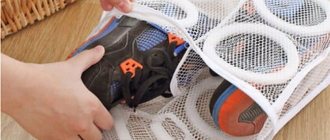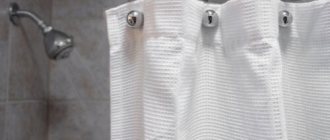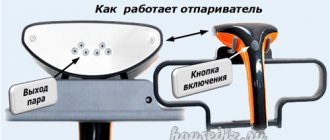Fumio Sasaki is an ordinary guy who bought a lot of things thinking it would boost his self-esteem or make him happier. When he realized that he had turned his already small home into a space filled with rubbish, he decided that he had had enough and needed to change something. Sasaki became interested in the ideas of minimalism and said goodbye to many things that bothered him. The effect was amazing: he learned to make do with little, began to spend less time on cleaning, pay more attention to what is really important - and, by his own admission, found true freedom and happiness.
In the book “Farewell to Things!” the author shares his experience, gives specific recommendations and shows how minimalism can not only transform your apartment, but also truly enrich your life. Anyone can become a minimalist, and to do this you don’t need to throw everything away, it’s important to understand what is valuable to you and get rid of everything else.
Get rid of everything you haven't used in a year
One of the main methods of downsizing is to get rid of things you haven't used in a year and don't intend to use in the future. Of course, I do not encourage you to throw away a warm blanket or down jacket in the summer, which you will need when winter comes. The same goes for a swimsuit that will come in handy in the summer.
Advertising on Forbes
But if you haven't used something in the last four seasons, then you probably don't need it at all. The only exception would be emergency equipment and emergency supplies that you keep in case of a disaster.
A build-up of dust isn't very pleasant, but it's a useful sign that it's time to consider throwing away the item. The thicker the layer of dust, the less the item was used. An item that was not useful last year is unlikely to be needed next year or the year after. And if you use something once every few years, wouldn’t it be wiser to resort to renting? Let's save the time and energy that we spend on maintaining in normal condition the things that lie like dead weight in our home.
Make storage systems more convenient
Use useful tools for organized storage that will help you organize things more beautifully/neatly and improve the ergonomics of your closets/bedside tables. You will find useful interior space dividers, organizers, baskets and containers of different shapes and sizes. These can be found in Ikea and Leroy Merlin, as well as on wildberries, ozon and other online stores.
Throw away everything you keep for the sole purpose of impressing others.
As I noted in Chapter 2, we often use things to show others our own value. Therefore, it is very useful to ask yourself whether you keep certain items because you really like them or because you want to draw others' attention to some of your qualities.
We are all, of course, concerned about how we look from the outside. It's nice to be considered a person who enjoys a luxurious life, surrounded by super-sophisticated appliances and beautiful furniture, wears fashionable clothes and expensive watches, and drives around in a stylish car. Or maybe you have chosen the image of a creative person who surrounds himself with art and musical instruments? Everyone does their best to create their own image.
However, we truly enjoy only those things that we use frequently and whose care does not require much effort. Yes, the trappings of a successful lifestyle are very tempting, but I strongly advise you to think about getting rid of the things you keep in your home for others to see.
What decluttering strategies are there: books and videos
We have already mentioned Marla Seeley and Marie Kondo. But it’s worth talking about them in more detail.
"Fly Lady"
A “Fly Lady” or “flying lady” is unthinkable without the appropriate “uniform”: comfortable shoes (and these are not slippers!), beautiful, neat clothes.
The basic concept of this system: an island of cleanliness, looking at which you will be inspired to maintain order. Author Marla Cilley suggests making an island like this for a always-sparkling kitchen sink. But you can choose any corner in the house. The habit of “living in the fly style” begins with regular washing of this island.
Photo: pixabay.com
Decluttering, a 15-minute timer, dividing into zones, free surfaces, two-minute cleaning - these are also the basics of Marla Seelly's theory.
She also suggests setting aside an hour a week for general cleaning - 15 minutes in each zone, no more. And to make building your own system as easy as possible, he recommends starting a diary with a to-do list. You can enter a weekly and monthly cleaning schedule into it.
Marla is also against ripping out the house on weekends. This is time for family and hobbies.
Anyone interested can subscribe to her newsletter online and receive cleaning tasks by email every day. When you realize that several thousand people in the world are now wiping the dust on the mezzanine with you, it becomes more fun.
Photo: pixabay.com
- Cleaning
5 cleaning apps and services that will help you keep your home perfectly clean
Marie Kondo's method
But Marie Kondo is not a fan of prolonging the pleasure of saying goodbye to things. Her method is quick decluttering. And not by storage location, but by category. Clothes, documents, books may lie in different places in the apartment, and in order to have an idea of their quantity and quality, you need to sort out one category at a time.
The author advises cleaning alone so that the advice of loved ones does not confuse you.
Photo: Instagram harmony_order
Distinguish between things you want and those you need.
Here is an example that may seem a little exaggerated to you. Imagine that you are climbing a mountain, but you are not very well equipped for it. You are wearing light clothes, have poor sense of direction and are lost. The temperature drops, it starts pouring rain, and you are shivering from the cold. Desperate, you finally find a small hut and go inside, wrapping yourself in a blanket to warm yourself. This blanket is the only item you really need.
In everyday life, however, we are surrounded by an abundance of all kinds of goods, which are not difficult to acquire. We are offered the latest electrical appliances, stylish clothes and accessories, super fashionable clothes and in general everything that your heart desires.
And if in the mountains a single warm blanket is enough, then when you return home, you will probably want to buy a second blanket - the color you like, and then a third - of a higher quality, soft and beautiful.
To avoid the temptation to buy more and more things, just ask yourself if you really need them. Take into account the experience of the Buddhist monk Ryunosuke Koike. In such cases, he puts his hand on his chest, imagines this thing and... feels discomfort if he just really wants to have it, when in fact he can do without it. It is quite possible that you are mistaken in believing that you are missing something in life, although you already have everything you need.
Stage two of decluttering your home
When the main stage has been completed, you can proceed to the following: sometimes organize mini-marathons to get rid of excess - set a timer for 5-10 minutes and run around the apartment with a bag in your hands. Anything that falls under the above definition of junk, put it there. After the alarm rings, put the contents into boxes. The main thing is not to return anything to its original place.
You can keep several empty bags/boxes nearby and sort them right away. Cleaning equipment - a bucket of clean water, a dust cloth, a vacuum cleaner - will also come in handy. Then at the same time you will brush away the cobwebs and wipe the hidden corners into which the human hand reaches once a year.
Vacuum cleaner Philips FC9573 PowerPro Active
Even better, make it a habit to get rid of unnecessary things as soon as you find them. Then you won’t even need 15 minutes.
Photo: pixabay.com
This will not take time at all, but self-control - yes. After all, it happens that when we find small-sized children’s T-shirts in a drawer, we put them back with the thought: “I’ll sort them later.” No, put them immediately in a box marked “Give as a gift.” Have you come across an unloved calendar? Immediately remove it from the wall. Did you get your hands on a chipped cup? Into the bucket without hesitation.
Photo: Instagram love_scandi
This will only seem strange to you and your household at first. Then you get used to it, and it will become difficult to live differently, among unloved and ugly things. However, be careful with the personal space of family members. You can use your gift of persuasion, but only the owner of the item should decide what to throw away and what not.
It is possible that over time, children, spouse and parents, seeing the results of your cleaning, will also want order in their areas. And they will be happy to join you. But think about it, maybe they just don’t have enough items to store? If you buy more of them, some of the rubble will definitely disappear.
Photo: Instagram gingermadebread
Take photos of those things that are difficult to part with
Call me sentimental, but I like to take pictures of what I'm about to part with to soften the blow. I still do this from time to time: just the other day I photographed a pair of old nail clippers before getting rid of them. You're probably wondering why I need all these images. Frankly, I don't remember ever admiring them, but I still take pictures to preserve the memories associated with these things.
I believe that throwing away material objects does not mean losing memories as well. As long as you have photographs, you can relive the past experience at any time. So if you feel like you can't part with a picture your child drew in elementary school, a souvenir from a trip, or someone's gift, just take a photo of these items and it will be easier to throw them away. I can tell you from personal experience that it is extremely unlikely that you will actually go back to looking at the images. I myself took thousands of photographs that I could have easily done without. But the psychological moment is important here. When I do this, I know that it will mean that I have become more focused on the present. I hope that one day I will start throwing away unnecessary things without too much thought, but until that day comes, I will probably continue to take photos of them.
Exchange by barter
The method of such exchange is bookcrossing. This is a whole social movement where you give away a book that you have already read, and in return you take a new one for yourself. It is difficult to track bookcrossing zones, but they are usually located in libraries, cultural institutions, universities and museums. Sometimes books are sent by mail (similar to postcrossing). But be careful: this way you can collect many other books you don’t need. If you suspect you won't be able to stop, donate all your extra books to the library.
It'll be easier to revisit your memories if you go digital
I'm a fan of film photography, so it's difficult to say how much money I spent on developing the film and printing the pictures. I carried my favorite camera with me everywhere in my bag, and I loved taking photos, but I wasn't very good at organizing the material afterwards. He randomly placed printed photographs and negatives everywhere, and then he himself could not tell when they were taken. In the end, I put all my wealth in the closet, where it gathered dust for a long time.
Deciding to become a minimalist, I scanned all my photographs, as well as letters that I had stored for many years, and transferred everything into digital format. Now, if I'm in the mood, these materials can easily be viewed on the computer, where they are organized chronologically and sorted into folders, so understanding them is not difficult, and thanks to cloud storage of information, I can always access my precious albums, no matter where there was no peace.
Our things are like our roommates, except we pay the rent for them.
In Japan they say that a person needs a mat half the size of a tatami to sit on and a tatami to sleep on. That, in fact, is all the space needed. If, say, you rent a house with a friend, then the rent will not increase, you will just need space for one more tatami.
However, each of us, even if we live alone, still has roommates - our things. And, by the way, the space they occupy far exceeds the area of the tatami.
Advertising on Forbes
Nobody minds living in a big, spacious house, but look at the situation from a different angle: doesn't this mean that we are simply allowing our things to live in more comfortable conditions? So what do we get in return? Our things are not going to contribute their share of the rent, they are not going to help us around the house, instead they are creating extra work for us. Do we really want to pay rent for them? Perhaps it would be wiser to kick them out.
How to quickly clean the bathroom and toilet.
The task is made easier, as a rule, by small areas. And this is very useful, because the charge of vigor and fuse remains only with them)
- Cleaning, as always, starts from the ceiling. We wipe the lampshade.
- We go to the shelves and check the expiration dates of washing and cosmetic products.
- Once the drawers and cabinets are completely cleaned out, we move on to the walls. We spray them (usually tiles) and the plumbing fixtures with a cleaning agent.
Limescale deposits can be easily removed using a swab soaked in acetic acid.
- Remove the waterproof curtain and place it in the bathtub. Fill the bathtub with lukewarm water and bleach or other cleaning products. Close the door to the bathroom for 10-15 minutes. Under the influence of steam, the effect of cleaning the walls will become faster and much more effective. We drain the water, rinse the curtain in clean water, thereby cleaning not only the curtain, but also the bathtub itself.
- We wipe down the walls and plumbing. Washing the floor by hand.
- Ventilate the bathroom well after this procedure.
Well, now you need to drink delicious tea and cake and watch a good movie. Spring cleaning is a feat! You deserve a rest)
Tidying up doesn't mean minimizing
We Japanese have a custom of doing a thorough cleaning at the end of the year. We throw away some things and put everything scattered around out of sight. We try to rationally use the free space and store our property in such a way that it does not interfere with our daily life. But over time, chaos inevitably reigns again, and this happens again and again. So regular cleaning is not the answer, since tidying up does not lead to minimization.
It's much smarter to focus on reducing the amount of stuff you have to put away. Once you do this, the space around you will naturally become less cluttered, and the vicious circle will break. For example, I have so few things in my apartment that it doesn’t get cluttered at all. It is basically impossible to make a mess in my home!
Where to put unnecessary things if you don’t want to throw them away
- Expired medications and cosmetics are just thrown in the trash.
- Things that can still serve, but are simply boring, can be sold on electronic advertising services.
- Sex toys can be recycled.
- Good clothes are useful for volunteers and charities (just remember to keep them in order).
- Recycle soiled and torn clothing.
- Donate old bedding and towels to animal shelters: volunteers use them to make bedding for their animals.
Destroy trash breeding grounds
There is one subtlety: we usually do the cleaning, gradually reducing the clutter in the storage areas, after which we can finally throw out the containers themselves in which everything was stored.
But let's remember how we get rid of household pests. Do we really first kill the insects one by one, and then, after such a tedious process, proceed to eliminate their nest? Of course not, otherwise the pests will multiply faster than we can destroy them.
Advertising on Forbes
The same applies to storage facilities for all sorts of rubbish, which can be likened to breeding grounds for harmful insects. Even if we thoroughly clean the nests, we will certainly begin to fill them again later. Therefore, the most effective cleaning method is to destroy the nest itself.
Get rid of containers and boxes? I can already sense your skepticism. But imagine what would happen in such a case. Items without proper storage containers will be scattered everywhere in haphazard heaps. Fortunately, most of us will not be able to bear such a sight, and we will be forced to do something, for example, start throwing away excess trash. When our property no longer has a cozy habitat, it, like those annoying insects that have lost their nest, will gradually begin to disappear.
Collect things of the same category into a common “pile”
If only some of the wardrobe items weigh in your closet, disassemble several storage areas at a time. Place clothes in the center of the room in a general pile and methodically distribute them into subcategories (T-shirts, jeans, blouses, dresses, etc.). Place “outsiders” in boxes or bags.
Do the same with the rest of your “belongings” - shoes, dishes, small household appliances, documents and office supplies, sports equipment, cosmetics.
Read the blog: “7 mistakes we make when decluttering our apartment.”
Leave unused space empty
What I mean? When we notice an area where we have not placed anything, we perceive it as unused space. Naturally, we try by hook or by crook to fill this void.
For example, we install a washing machine in a specially designated place, and then we see unused space above our heads. And we try to use it as efficiently as possible, especially considering how small apartments are in Tokyo. Therefore, we often equip a cabinet above the washing machine where we can store towels, washing powder, fabric softener, bleach, and so on.
But, of course, it doesn't end there. We often add another rail on top, going from one wall to another, attach hangers and hooks to it and are glad that we found such a witty solution. Do you think life has become more comfortable as a result? Nothing like that! This is actually a step backwards. As soon as we have extra storage space, we inevitably start filling the space with more things, so that it soon becomes overcrowded.
Advertising on Forbes
The analogy of a crowded commuter train inevitably comes to mind. The spectacle, frankly, is not at all inspiring. So is it worth the extra time and effort to keep yet another place where things are stored? Keeping unused space empty will provide peace of mind by giving you a sense of freedom and keeping your mind open to more important things.
Wedding attributes
After the wedding, you cannot throw away the bouquet. It needs to be dried. Afterwards it can be used for ikebana. There are many signs regarding a wedding dress. It is not recommended to rent it, because another girl has already worn it, which means it is filled with someone else’s energy. It is advisable to purchase a new outfit, but it is expensive. Therefore, after the celebration, many try to sell the dress. But you shouldn’t do this, because you can sell your own happiness. The outfit must be stored; it will serve as a kind of talisman for the home. If you still decide to sell the dress, it must be cleared of your energy.
Give up the idea of "someday"
When we buy an electrical appliance, it usually comes with a bunch of additional accessories. Think about those vacuum cleaner attachments you've never used. What kind of screw is this, by the way? You keep all these parts and wires because you think you might need them “someday.” I don't know about you, but I've never used warranty cards. Now they go straight to the trash can.
Oh, that notorious “someday”! We don't throw away empty cookie jars or pretty paper bags, thinking they might be useful to us one day. We keep textbooks of a foreign language because one day we will start learning it. As soon as life gets better, we will get to all these numerous items. “Someday this will definitely happen” - that’s what we tell ourselves. Although we understand perfectly well that this time is unlikely to come. Let me give you some practical advice: give up the idea of “someday.” Things we don't need now will probably never need at all.
New life for old clothes
On the one hand, you shouldn’t keep old trash in your apartment, but on the other hand, old things can be updated. Housewives often decide to extend the life of their favorite dress by updating it. Such ideas have a right to exist.
In the old days, ancestors never threw away things; they were remade, creating new ones using the patchwork technique. Unnecessary clothes may be needed for those who love handicrafts and creativity. If you don't know how to work with your hands, you shouldn't hoard old things.
Choosing onion sets: rules that will allow you to collect juicy and large onions
Sofia Ernst admitted that her husband was against her acting career
We pack gifts: run an iron over a napkin and cling film
Say goodbye to your old self
When considering whether to throw something away, it's important to consider whether you need it right now. Just as there is no use in trying to prepare for “someday” in the future, there is no point in clinging to what “once” was in the past.
The textbooks you used at school, the books that opened your eyes to the world when you were a child, the favorite outfit you once wore... Memories are wonderful, but you simply won't have room to develop if your attachment to the past is too strong. It's better to cut some of those ties so you can focus on what's important today.
Advertising on Forbes
Holding onto things from the past is the same as clinging to your former self. So I suggest you take courage and start “letting go” of things. Keep only those items that you really need, moving forward right from this very moment.
Extinguish hot spots
The term “hot spot” itself (from the English hot spot - “hot spot”) came from the Flylady philosophy.
This is a system for cleaning the house without much effort. A hot spot is a place where all sorts of garbage naturally accumulates. For example, you have a nightstand next to the front door. Households empty the contents of their pockets and bags onto it, and they put in it what they would hate to throw away. And it very quickly turns into a mountain of scarves, checks, newspapers. Some of the things in this pile will still be useful, but the rest belongs in the trash can.
“Flylady” suggests regularly extinguishing hot spots, that is, cleaning up problem areas. This will take literally a few minutes, but it will eliminate the chaos that tends to spread from the hot spot throughout the apartment.
Determine the places where trash accumulates in your home and sort them out, for example, in the morning. Set a reminder so you don't forget.











